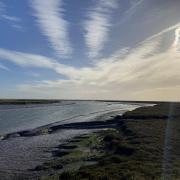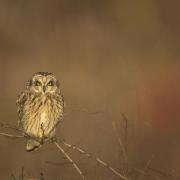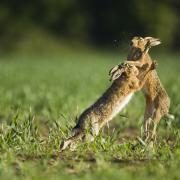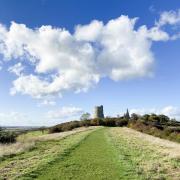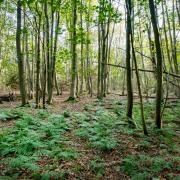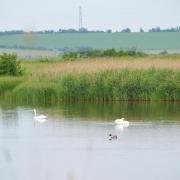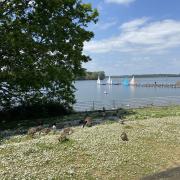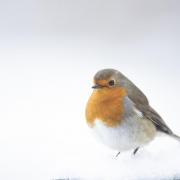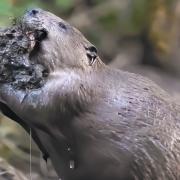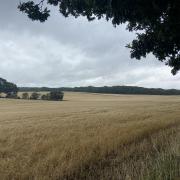Located in the south-western corner of Essex, Waltham Abbey is perhaps best known for its traditional market town, filled with character and charm and steeped in historic associations with the likes of King Harold, Henry II and Henry VIII

Much less known, however, are the stunning open spaces, rivers and lakes which are integral to this unique town and provide an important habitat for wildlife in the Lee Valley. In fact, Waltham Abbey is a gateway to hundreds of acres of parklands, just waiting to be discovered.
Stretching between Waltham Abbey in Essex and Broxbourne in Hertfordshire, the 1,000 acre River Lee Country Park has a huge variety of activities to enjoy outdoors and you are sure to be amazed by the variety of wildlife that’s thriving here.
Better still, clearly waymarked, traffic-free paths and trails mean it couldn’t be easier to enjoy the stunning scenery, nature and wildlife, whether you’re on foot, riding a bike, using a wheelchair or pushing a buggy.
If you’re a keen bird watcher, Fishers Green is an ideal starting point. You’ll find bird hides not far from the car park, where you can view lakes, wader scrapes and farmland habitats.

The Bittern Information Point and bird hide on Seventy Acres Lake is one of the best places in the country to see wintering bittern and there’s plenty to see in the spring and summer months too.
Each spring a large common tern colony return from Africa to breed on special nesting rafts, installed at Seventy Acres Lake by Lee Valley Regional Park’s ranger team.
The rafts have been carefully created to mimic the common tern’s preferred habitat of gravel shorelines. It’s quite a spectacle from the viewpoint over the lake when the common terns fly noisily overhead and skim the water’s surface.
The Bittern Information Point and bird hide is open every day, but if you head there during the weekend or bank holidays, be sure to check out the CCTV footage for close-up views of birds using the nesting rafts. Volunteers are also on hand during the weekend to help with sightings and information.

Hall Marsh Scrape offers great views of wading birds as they pass through the Lee Valley on their migration. These artificial scrapes have been specially designed to allow Lee Valley Regional Park’s rangers to control water levels.
In spring the water levels are drawn down to expose shingle islands which are used by little ringed plover, returning from Africa to breed in the UK. You may also spot green and common sandpiper on their passage through the valley.
In the winter months the scrapes are well used by a variety of duck including gadwall, shoveler, teal and wigeon as well as large flocks of lapwing. Hall Marsh Scrape is easily accessible along the Lee Valley Park Path from Hooks Marsh Car Park.
For its sheer variety of wildlife, Cornmill Meadows is not to be missed. Just a short walk from Waltham Abbey town, Cornmill Meadows has been designated a Site of Special Scientific Interest for its dragonflies.

Visit the site between May and September and you could see up to 23 different types of dragonfly – that’s half of Britain’s native species.
The meadows are flooded in winter to provide a habitat for overwintering wildfowl such as wigeon and teal, Britain’s smallest duck. In spring the water levels are drawn down to expose invertebrate-rich muddy areas which are perfect feeding areas for wading birds.
Lee Valley Regional Park’s conservation team work closely with partners to improve the extent and quality of habitats in the park for breeding waders.
This forms part of the Lee Valley Wader Strategy and is in response to a decline in breeding wading birds in the Lee Valley. The ongoing enhancements at Cornmill Meadows have resulted in lapwing recently returning to breed at this site.

While you’re in the area, why not enjoy a historic stroll through Waltham Abbey Gardens. This was once one of the largest Augustinian abbeys in the country and the reputed resting place of King Harold after his defeat at Hastings in 1066. The Abbey’s peaceful rose gardens have plenty of benches and picnic tables, so you can sit back and relax in beautiful surroundings.
River Lee Country Park boasts two farms – perfect for family days out. At Lee Valley Park Farms kids can get up close and personal with an amazing array of animals including sheep and snuffling rare breed pigs, plus llamas, reindeer and a family of charming meerkats.
With imaginative play spaces, it’s a brilliant place for kids to run wild too. From toddlers to school age, little ones can let off steam on the giant bouncing pillow, scale a spider tower, dig in the sand, explore Piglet’s Paradise and ride the toy combine harvester.
There’s also a working dairy farm just a short stroll or tractor and trailer ride away, where you can see how the cows and calves are cared for and begin their own journey of discovery with nature.
Head even further south from Waltham Abbey, to the Green Flag award-winning Gunpowder Park, and you’ll find yet more stunning open spaces and diverse wildlife.
This former Royal Ordinance munitions testing area was transformed into an exciting country park, which is perfect for walks and cycle rides and home to a range of wildlife including migrating birds, butterflies and dragonflies.
During the summer months Gunpowder Park comes alive with the distinctive sound of skylark performing their song flight.
The flower-rich meadows burst into colour and provide a rich source of nectar for insects, attracting a variety of butterflies including common and holly blue, Essex, small and large skipper and white-letter hairstreak.
If you open your mind, and open your eyes, to everything Essex has to offer, you really can expect the unexpected.






